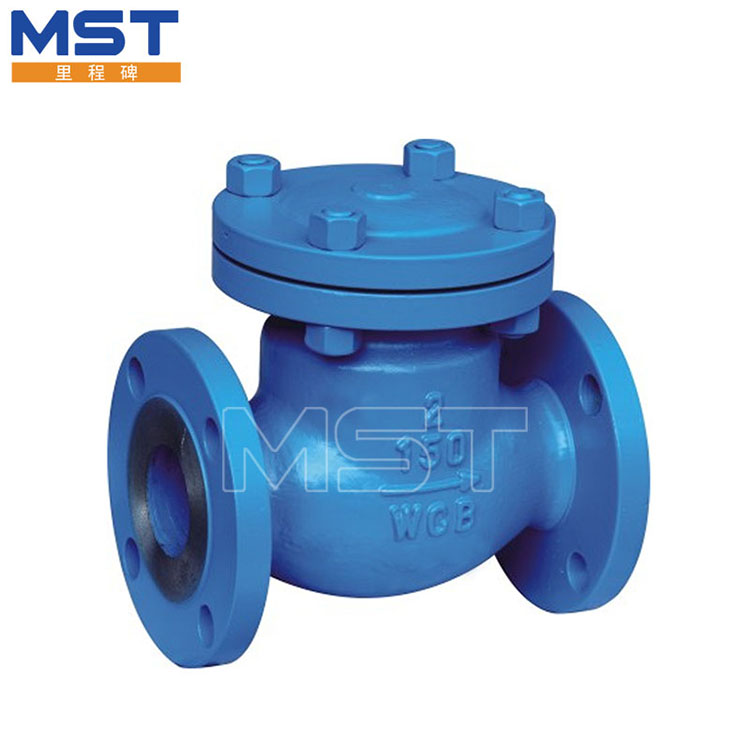 English
English Español
Español  Português
Português  русский
русский  Français
Français  日本語
日本語  Deutsch
Deutsch  tiếng Việt
tiếng Việt  Italiano
Italiano  Nederlands
Nederlands  ภาษาไทย
ภาษาไทย  Polski
Polski  한국어
한국어  Svenska
Svenska  magyar
magyar  Malay
Malay  বাংলা ভাষার
বাংলা ভাষার  Dansk
Dansk  Suomi
Suomi  हिन्दी
हिन्दी  Pilipino
Pilipino  Türkçe
Türkçe  Gaeilge
Gaeilge  العربية
العربية  Indonesia
Indonesia  Norsk
Norsk  تمل
تمل  český
český  ελληνικά
ελληνικά  український
український  Javanese
Javanese  فارسی
فارسی  தமிழ்
தமிழ்  తెలుగు
తెలుగు  नेपाली
नेपाली  Burmese
Burmese  български
български  ລາວ
ລາວ  Latine
Latine  Қазақша
Қазақша  Euskal
Euskal  Azərbaycan
Azərbaycan  Slovenský jazyk
Slovenský jazyk  Македонски
Македонски  Lietuvos
Lietuvos  Eesti Keel
Eesti Keel  Română
Română  Slovenski
Slovenski  मराठी
मराठी  Srpski језик
Srpski језик
Why are check valves considered key automatic components in industrial fluid control systems?
2025-11-04
In industrial fluid control systems, check valves are crucial automatic components designed to prevent accidental backflow of the medium, protecting equipment such as pumps and motors, and ensuring the stability of industrial processes. As a professional manufacturer with advanced production capabilities and global export experience, Tianjin Milestone Valve Company focuses on providing high-performance check valves and other industrial valves to meet diverse industrial needs. So, do you understand check valves?

What is a check valve?
A check valve is an automatic valve whose closing part (circular valve disc) operates under its own weight and fluid pressure. Its primary function is to prevent backflow of the medium, making it an indispensable component in fluid transport systems across various industries. Unlike manual or semi-automatic valves, check valves do not require an external power source—their operation is entirely driven by the dynamic pressure of the medium itself, ensuring real-time and reliable prevention of backflow.
Core Functions of Check Valves
Preventing backflow of the medium: This is the most basic function. In piping systems, check valves prevent backflow of media when system pressure drops, avoiding production interruptions.
Protecting pumps and drive motors: Backflow can cause pumps to reverse, potentially damaging internal components and overloading the drive motor, resulting in costly downtime. Check valves close immediately upon backflow, eliminating this risk.
Safely discharging media from containers: In storage tanks or pressure vessels, check valves control the unidirectional flow of media, ensuring safe discharge and preventing siphon backflow or contamination.
Safe isolation: Check valves are used in conjunction with gate valves to form a dual protection system. For example, in high-pressure pipelines, check valves prevent backflow, while gate valves allow manual isolation for maintenance, thus improving the overall system safety.
Types of Check Valves: Lift and Swing Valves
Based on the movement of the valve disc, check valves are mainly divided into lift check valves and swing check valves. Each type has its unique structural characteristics and application scenarios, suitable for different industrial needs.
Lift Check Valve
The structure of a lift check valve is similar to that of a gate valve, but it lacks a valve stem that drives the valve disc. The valve disc moves vertically (up and down) along the valve seat to control flow.
Working Principle
Opening Process: When the medium flows from the inlet end (lower side) to the outlet end (upper side), the inlet pressure pushes the valve disc upward, overcoming the combined resistance of the valve disc's own weight and flow friction. This lifts the valve disc off the valve seat, allowing the medium to pass smoothly.
Closing Process: If the medium attempts to flow backward, the reverse pressure pushes the valve disc downward. Then, under its own weight and the reverse pressure, the valve disc presses firmly against the valve seat, sealing the pipeline and preventing backflow.
Key Advantages
Fast closing response, ideal for systems with frequent pressure changes.
High sealing accuracy when closed, suitable for media with low leakage requirements.
Typical Applications
Water supply and drainage systems.
Boiler feedwater piping and steam systems in power plants.
Light industrial sectors that require extremely high purity of the medium.
Swing Type Check Valve
The Swing Type Check Valve features a disc that is inclined and mounted on a rotating axis (usually located near the valve seat). The disc swings around this axis to open or close, rather than moving vertically.
Working Principle
Opening Process: When the medium flows in the forward direction, its pressure pushes the disc to swing away from the valve seat, creating a passage for the medium. The disc’s swing angle is determined by the medium’s flow rate—higher flow rates result in a larger opening angle, minimizing flow resistance.
Closing Process: When backflow occurs, the reverse medium pressure pushes the disc to swing back toward the valve seat. The disc then seals the seat under the reverse pressure, stopping backflow. The working principle is similar to the Lift Type Check Valve, but the swing motion reduces the impact force during closing, extending the valve’s service life.
Key Advantages
Low flow resistance, making it suitable for large-diameter pipelines or high-flow-rate systems.
Simple structure, easy maintenance, and strong adaptability to media with slight impurities (e.g., wastewater, crude oil).
Typical Applications
Oil and gas pipelines.
Thermal supply systems.
Metallurgical industry.
| Feature | Lift Type Check Valve | Swing Type Check Valve |
| Disc Movement Mode | Vertical (up/down) along the valve seat | Swing around a fixed axis |
| Flow Resistance | Higher (due to vertical disc movement) | Lower (due to swing motion and larger opening) |
| Closing Speed | Fast (ideal for pressure-sensitive systems) | Moderate (reduces seat impact) |
| Sealing Performance | Excellent (suitable for low-leakage demands) | Good (sufficient for most industrial scenarios) |
| Media Adaptability | Clean media (water, steam, refined oil) | Media with slight impurities (wastewater, slurry) |
| Pipeline Diameter Suitability | Small to medium diameters (DN15–DN300) | Medium to large diameters (DN50–DN2000+) |
| Typical Application | Power generation, food processing | Oil & gas, metallurgy, thermal supply |




